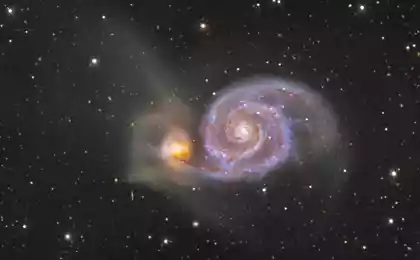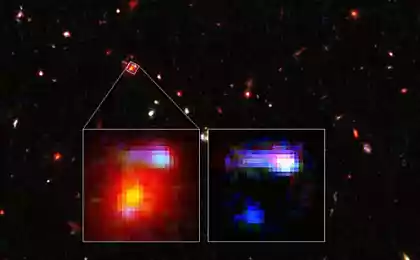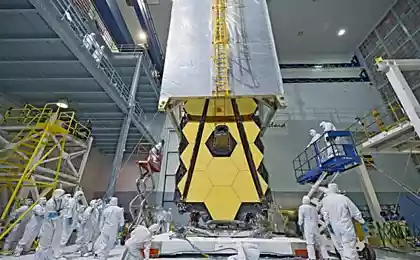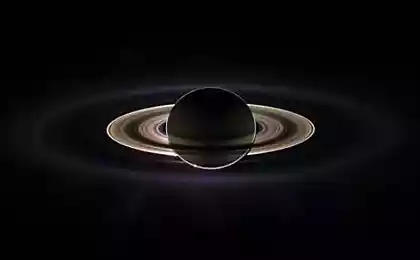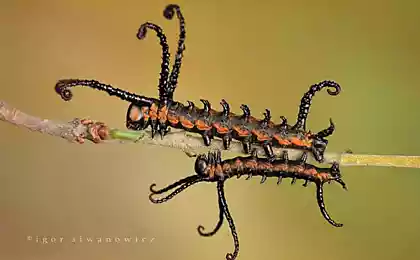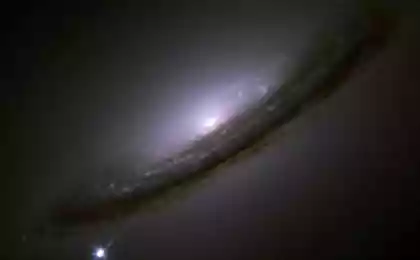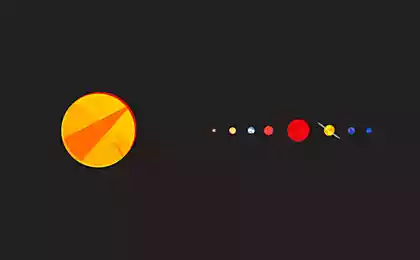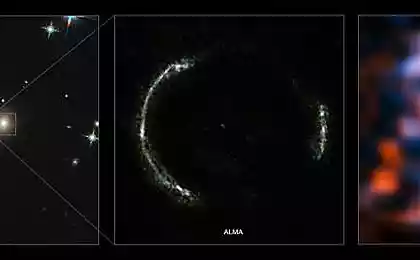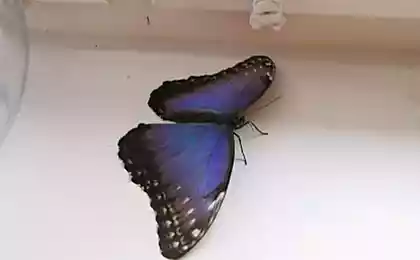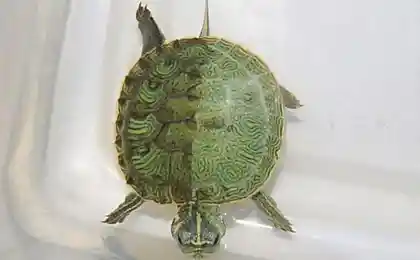1179
Butterfly star, uoblichiinnaya Space Telescope "Herschel"

Beautiful blue butterfly flutters to the cloud of warm dust and gas. Beneath it stretches intricate network of cold filaments.
This area uoblichiila Vela C European Space Observatory "Herschel».
Vela C - the most massive of the four parts of the complex Vela - a vast region of star formation, located just 2,300 light-years from the sun. This is an ideal natural laboratory for studying how light is born.
Sensors "Herschel" configured on the wave far infrared part of the spectrum are able to consider the areas in which the young stars of high and low mass heated dense clumps of gas and dust, and thus give new born luminaries.
Immediately attracts the attention of soft blue and yellow "butterfly" to the right of the image center, which seems to be flying to the nest, the retinue of blue material in the lower right corner.
These areas stand out because of their dust heated by young and hot stars. Accumulation of predominantly hot and massive stars is extended along the "body" of the butterfly.
These heavy light obeys the rule "live fast, die young." Those solar mass exceeds eight times, supernovae flare up in just 10 million years after the birth.
In the center of the image "woven into" mostly tight sleeve cold gas and dust. It is surrounded by a complex web of light reddish filaments. Deep inside, you can see the latest (preferably near the left edge of the picture) on the bright spots: it protostars, the seeds of new stars that light up shortly.
The image demonstrates the ability of the observatory "Herschel" track stars, and high and low weight at different stages of evolution - from the cold filaments dozvёzdnyh cores and protostars to the more developed regions containing dust, which gently heated hot stars.
The image was obtained using instruments PACS and SPIRE at wavelengths of 70, 160 and 250 microns, corresponding to blue, green and red channels. North is to the right, the east - at the top.
